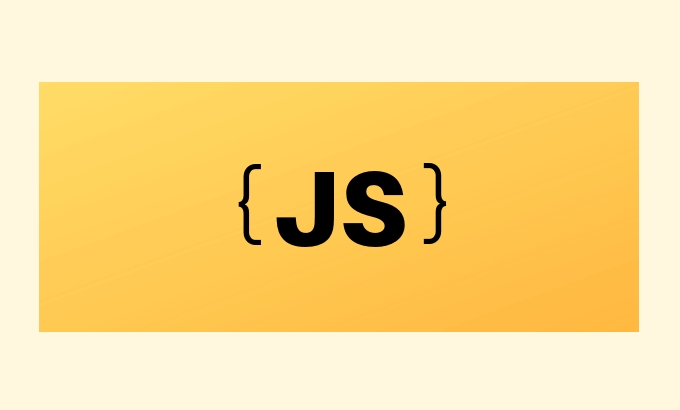JavaScript Stream API for Efficient Data Processing (Node.js)
Jul 20, 2025 am 03:13 AMReasons for more efficient processing of data with Stream include memory savings, performance improvements, and support for asynchronous processing. 1. Save memory: avoid loading all data at once through blocking processing; 2. Improve performance: handle read and write operations in parallel; 3. Support asynchronous processing: suitable for non-blocking I/O operations. In the example, the file is read block by block through the Readable stream, and the Writable stream is written to the target file after being converted by the Transform stream. The entire process is low in memory and high in efficiency. In practical applications, attention should be paid to backpressure control, error handling and chain calls of multi-converting streams to ensure stable and efficient stream processing.

When processing large amounts of data, especially in the Node.js environment, directly reading all data at once may lead to excessive memory usage or even crashes. At this time, using JavaScript's Stream API seems very efficient and necessary. It allows you to manipulate data streams in a "read-handling" way, rather than loading everything at once.

What is Stream?
Stream is an abstract data transmission mechanism, which is widely used in Node.js to handle I/O operations such as file and network requests. Its core idea is to read and process data blocks on demand , rather than loading the entire file or response body into memory at once.
Node.js provides built-in stream modules, and common stream types include:

- Readable : For example, read data from a file or HTTP request.
- Writable : For example, write data to a file or send it to the client.
- Transform : performs intermediate processing between reading and writing, such as compression, encryption, etc.
- Duplex (duplex flow) : also has read and write capabilities, such as WebSocket.
Why is it more efficient to use Stream to process data?
When you face scenarios such as large files, real-time logs, HTTP request bodies, etc., the advantages of Stream are reflected:
- Memory saving : All data will not be loaded at once, but processed in chunks.
- Improve performance : Read and write operations can be processed in parallel.
- Supports asynchronous processing : naturally suitable for non-blocking I/O operations.
For example: If you are processing a 1GB CSV file, it may take hundreds of MB to 1GB of memory to directly read. When reading line by line through Readable Stream, the memory usage may be only a few MB.

How to use Stream for data processing?
Here is a basic example: read content from one file and process it through a Transform stream, and finally write to another file.
const fs = require('fs');
const { Transform } = require('stream');
// Create a conversion stream and convert each line into uppercase const upperCaseStream = new Transform({
transform(chunk, encoding, callback) {
this.push(chunk.toString().toUpperCase());
callback();
}
});
// Create read stream and write stream const readStream = fs.createReadStream('input.txt');
const writeStream = fs.createWriteStream('output.txt');
// Streaming readStream.pipe(upperCaseStream).pipe(writeStream);In this example:
-
readStreamis responsible for reading file contents block by block; -
upperCaseStreamhandles each chunk; -
writeStreamwrites the processed results to a new file; - Use the
.pipe()method to connect these streams, and the code is simple and efficient.
A few tips in practical applications
1. Backpressure control
Backpressure issues may occur when the readable stream is much faster than the writeable stream. Node.js' streams will automatically handle this situation, but you can listen to the 'drain' event to manually control the write rhythm.
2. Error handling is important
Don't forget to listen to the error event, otherwise the exception may cause the program to crash:
readStream.on('error', (err) => {
console.error('Read error:', err);
});3. Multiple Transforms can be called in chain
You can concatenate multiple conversion streams, such as filtering first and then formatting:
readStream .pipe(filterStream) .pipe(formatStream) .pipe(writeStream);
Basically that's it. Stream is not complicated, but is especially useful when dealing with large amounts of data or long-running tasks. Using it rationally can make your application more stable and efficient.
The above is the detailed content of JavaScript Stream API for Efficient Data Processing (Node.js). For more information, please follow other related articles on the PHP Chinese website!

Hot AI Tools

Undress AI Tool
Undress images for free

Undresser.AI Undress
AI-powered app for creating realistic nude photos

AI Clothes Remover
Online AI tool for removing clothes from photos.

Clothoff.io
AI clothes remover

Video Face Swap
Swap faces in any video effortlessly with our completely free AI face swap tool!

Hot Article

Hot Tools

Notepad++7.3.1
Easy-to-use and free code editor

SublimeText3 Chinese version
Chinese version, very easy to use

Zend Studio 13.0.1
Powerful PHP integrated development environment

Dreamweaver CS6
Visual web development tools

SublimeText3 Mac version
God-level code editing software (SublimeText3)

Hot Topics
 How does garbage collection work in JavaScript?
Jul 04, 2025 am 12:42 AM
How does garbage collection work in JavaScript?
Jul 04, 2025 am 12:42 AM
JavaScript's garbage collection mechanism automatically manages memory through a tag-clearing algorithm to reduce the risk of memory leakage. The engine traverses and marks the active object from the root object, and unmarked is treated as garbage and cleared. For example, when the object is no longer referenced (such as setting the variable to null), it will be released in the next round of recycling. Common causes of memory leaks include: ① Uncleared timers or event listeners; ② References to external variables in closures; ③ Global variables continue to hold a large amount of data. The V8 engine optimizes recycling efficiency through strategies such as generational recycling, incremental marking, parallel/concurrent recycling, and reduces the main thread blocking time. During development, unnecessary global references should be avoided and object associations should be promptly decorated to improve performance and stability.
 How to make an HTTP request in Node.js?
Jul 13, 2025 am 02:18 AM
How to make an HTTP request in Node.js?
Jul 13, 2025 am 02:18 AM
There are three common ways to initiate HTTP requests in Node.js: use built-in modules, axios, and node-fetch. 1. Use the built-in http/https module without dependencies, which is suitable for basic scenarios, but requires manual processing of data stitching and error monitoring, such as using https.get() to obtain data or send POST requests through .write(); 2.axios is a third-party library based on Promise. It has concise syntax and powerful functions, supports async/await, automatic JSON conversion, interceptor, etc. It is recommended to simplify asynchronous request operations; 3.node-fetch provides a style similar to browser fetch, based on Promise and simple syntax
 JavaScript Data Types: Primitive vs Reference
Jul 13, 2025 am 02:43 AM
JavaScript Data Types: Primitive vs Reference
Jul 13, 2025 am 02:43 AM
JavaScript data types are divided into primitive types and reference types. Primitive types include string, number, boolean, null, undefined, and symbol. The values are immutable and copies are copied when assigning values, so they do not affect each other; reference types such as objects, arrays and functions store memory addresses, and variables pointing to the same object will affect each other. Typeof and instanceof can be used to determine types, but pay attention to the historical issues of typeofnull. Understanding these two types of differences can help write more stable and reliable code.
 JavaScript time object, someone builds an eactexe, faster website on Google Chrome, etc.
Jul 08, 2025 pm 02:27 PM
JavaScript time object, someone builds an eactexe, faster website on Google Chrome, etc.
Jul 08, 2025 pm 02:27 PM
Hello, JavaScript developers! Welcome to this week's JavaScript news! This week we will focus on: Oracle's trademark dispute with Deno, new JavaScript time objects are supported by browsers, Google Chrome updates, and some powerful developer tools. Let's get started! Oracle's trademark dispute with Deno Oracle's attempt to register a "JavaScript" trademark has caused controversy. Ryan Dahl, the creator of Node.js and Deno, has filed a petition to cancel the trademark, and he believes that JavaScript is an open standard and should not be used by Oracle
 React vs Angular vs Vue: which js framework is best?
Jul 05, 2025 am 02:24 AM
React vs Angular vs Vue: which js framework is best?
Jul 05, 2025 am 02:24 AM
Which JavaScript framework is the best choice? The answer is to choose the most suitable one according to your needs. 1.React is flexible and free, suitable for medium and large projects that require high customization and team architecture capabilities; 2. Angular provides complete solutions, suitable for enterprise-level applications and long-term maintenance; 3. Vue is easy to use, suitable for small and medium-sized projects or rapid development. In addition, whether there is an existing technology stack, team size, project life cycle and whether SSR is needed are also important factors in choosing a framework. In short, there is no absolutely the best framework, the best choice is the one that suits your needs.
 Understanding Immediately Invoked Function Expressions (IIFE) in JavaScript
Jul 04, 2025 am 02:42 AM
Understanding Immediately Invoked Function Expressions (IIFE) in JavaScript
Jul 04, 2025 am 02:42 AM
IIFE (ImmediatelyInvokedFunctionExpression) is a function expression executed immediately after definition, used to isolate variables and avoid contaminating global scope. It is called by wrapping the function in parentheses to make it an expression and a pair of brackets immediately followed by it, such as (function(){/code/})();. Its core uses include: 1. Avoid variable conflicts and prevent duplication of naming between multiple scripts; 2. Create a private scope to make the internal variables invisible; 3. Modular code to facilitate initialization without exposing too many variables. Common writing methods include versions passed with parameters and versions of ES6 arrow function, but note that expressions and ties must be used.
 Handling Promises: Chaining, Error Handling, and Promise Combinators in JavaScript
Jul 08, 2025 am 02:40 AM
Handling Promises: Chaining, Error Handling, and Promise Combinators in JavaScript
Jul 08, 2025 am 02:40 AM
Promise is the core mechanism for handling asynchronous operations in JavaScript. Understanding chain calls, error handling and combiners is the key to mastering their applications. 1. The chain call returns a new Promise through .then() to realize asynchronous process concatenation. Each .then() receives the previous result and can return a value or a Promise; 2. Error handling should use .catch() to catch exceptions to avoid silent failures, and can return the default value in catch to continue the process; 3. Combinators such as Promise.all() (successfully successful only after all success), Promise.race() (the first completion is returned) and Promise.allSettled() (waiting for all completions)
 What is the cache API and how is it used with Service Workers?
Jul 08, 2025 am 02:43 AM
What is the cache API and how is it used with Service Workers?
Jul 08, 2025 am 02:43 AM
CacheAPI is a tool provided by the browser to cache network requests, which is often used in conjunction with ServiceWorker to improve website performance and offline experience. 1. It allows developers to manually store resources such as scripts, style sheets, pictures, etc.; 2. It can match cache responses according to requests; 3. It supports deleting specific caches or clearing the entire cache; 4. It can implement cache priority or network priority strategies through ServiceWorker listening to fetch events; 5. It is often used for offline support, speed up repeated access speed, preloading key resources and background update content; 6. When using it, you need to pay attention to cache version control, storage restrictions and the difference from HTTP caching mechanism.






